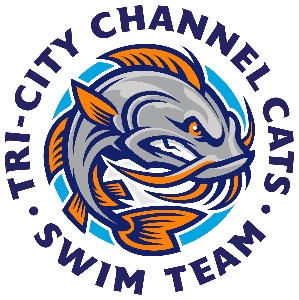Action Plan of the Tri-City Channel Cat Swim Team to Address Bullying
PURPOSE
Bullying of any kind is unacceptable at [insert the name of the club] (the “Club”) and will not
be tolerated. Bullying is counterproductive to team spirit and can be devastating to a victim.
The Club is committed to providing a safe, caring and friendly environment for all of our
members. If bullying does occur, all athletes and parents should know that incidents will be
dealt with promptly and effectively. Anyone who knows that bullying is happening is expected
to tell a coach, board member or athlete/mentor.
Objectives of the Club’s Bullying Policy and Action Plan:
1. To make it clear that the Club will not tolerate bullying in any form.
2. To define bullying and give all board members, coaches, parents and swimmers a
good understanding of what bullying is.
3. To make it known to all parents, swimmers and coaching staff that there is a policy and
protocol should any bullying issues arise.
4. To make how to report bullying clear and understandable.
5. To spread the word that (Name of Club) takes bullying seriously and that all
swimmers and parents can be assured that they will be supported when bullying is
reported.
WHAT IS BULLYING?
Generally, bullying is the use of aggression, whether intentional or not, which hurts another
person. Bullying results in pain and distress.
Bullying is the severe or repeated use, regardless of when or where it may occur, by one or
more USA Swimming members of an oral, written, electronic or technological expression,
image, sound, data or intelligence of any nature (regardless of the method of transmission) , or a
physical act or gesture , or any combination thereof, directed at any other member or
Participating Non-Member that to a reasonably objective person has the effect of causing
physical or emotional harm to the other member or damage to the other member’s property;
www.usaswimming.org/protect
i. Placing the other member in reasonable fear of harm to himself/herself or of
damage to his/her property;
ii. Creating a hostile environment for the other member at any USA Swimming
activity;
iii. Infringing on the rights of the other member at any USA Swimming activity; or
iv. Materially and substantially disrupting the training process or the orderly
operation of any USA Swimming activity (which for the purposes of this section
shall include, without limitation, practices, workouts and other events of a member
club or LSC).
REPORTING PROCEDURE
An athlete who feels that he or she has been bullied is asked to do one or more of the following
things:
Talk to your parents;
Talk to a Club Coach, Board Member, or other designated individual;
Write a letter or email to the Club Coach, Board Member, or other designated
individual;
Make a report to the USA Swimming Safe Sport staff.
There is no express time limit for initiating a complaint under this procedure, but every effort
should be made to bring the complaint to the attention of the appropriate club leadership as soon
as possible to make sure that memories are fresh and behavior can be accurately recalled and the
bullying behavior can be stopped as soon as possible.
HOW WE HANDLE BULLYING
If bullying is occurring during team-related activities, we STOP BULLYING ON THE
SPOT using the following steps:
1. Intervene immediately. It is okay to get another adult to help.
2. Separate the kids involved.
3. Make sure everyone is safe.
4. Meet any immediate medical or mental health needs.
5. Stay calm. Reassure the kids involved, including bystanders.
6. Model respectful behavior when you intervene.
If bullying is occurring at our club or it is reported to be occurring at our club, we address the
bullying by FINDING OUT WHAT HAPPENED and SUPPORTING THE KIDS
INVOLVED using the following approach:
FINDING OUT WHAT HAPPENED
1. First, we get the facts.
a. Keep all the involved children separate.
b. Get the story from several sources, both adults and kids.
www.usaswimming.org/protect
c. Listen without blaming.
d. Don’t call the act “bullying” while you are trying to understand what happened.
e. It may be difficult to get the whole story, especially if multiple athletes are involved
or the bullying involves social bullying or cyber bullying. Collect all available
information.
2. Then, we determine if its bullying. There are many behaviors that look like bullying but
require different approaches. It is important to determine whether the situation is bullying or
something else.
a. Review the USA Swimming definition of bullying;
b. To determine if the behavior is bullying or something else, consider the following
questions:
What is the history between the kids involved?
Have there been past conflicts?
Is there a power imbalance? Remember that a power imbalance is not
limited to physical strength. It is sometimes not easily recognized. If the
targeted child feels like there is a power imbalance, there probably is.
Has this happened before? Is the child worried it will happen again?
c. Remember that it may not matter “who started it.” Some kids who are bullied may
be seen as annoying or provoking, but this does not excuse the bullying behavior.
d. Once you have determined if the situation is bullying, support all of the kids
involved.
SUPPORTING THE KIDS INVOLVED
3. Support the kids who are being bullied
a. Listen and focus on the child. Learn what’s been going on and show you want to
help. Assure the child that bullying is not their fault.
b. Work together to resolve the situation and protect the bullied child. The child,
parents, and fellow team members and coaches may all have valuable input. It may help
to:
i. Ask the child being bullied what can be done to make him or her feel safe.
Remember that changes to routine should be minimized. He or she is not at
fault and should not be singled out. For example, consider rearranging lane
assignments for everyone. If bigger moves are necessary, such as switching
practice groups, the child who is bullied should not be forced to change.
ii. Develop a game plan. Maintain open communication between the Club and
parents. Discuss the steps that will be taken and how bullying will be
addressed going forward.
c. Be persistent. Bullying may not end overnight. Commit to making it stop and
consistently support the bullied child.
4. Address bullying behavior
a. Make sure the child knows what the problem behavior is. Young people who bully
www.usaswimming.org/protect
must learn their behavior is wrong and harms others.
b. Show kids that bullying is taken seriously. Calmly tell the child that bullying will
not be tolerated. Model respectful behavior when addressing the problem.
c. Work with the child to understand some of the reasons he or she bullied. For
example:
i. Sometimes children bully to fit in or just to make fun of someone is a little
different from them. In other words, there may be some insecurity involved.
ii. Other times kids act out because something else—issues at home, abuse,
stress—is going on in their lives. They also may have been bullied. These
kids may be in need of additional support.
d. Involve the kid who bullied in making amends or repairing the situation. The goal is
to help them see how their actions affect others. For example, the child can:
i. Write a letter apologizing to the athlete who was bullied.
ii. Do a good deed for the person who was bullied, for the Club, or for others in
your community.
iii. Clean up, repair, or pay for any property they damaged.
e. Avoid strategies that don’t work or have negative consequences:
i. Zero tolerance or “three strikes, you’re out” strategies don’t work. Suspending
or removing from the team swimmers who bully does not reduce bullying
behavior. Swimmers may be less likely to report and address bullying if
suspension or getting kicked off the team is the consequence.
ii. Conflict resolution and peer mediation don’t work for bullying. Bullying is
not a conflict between people of equal power who share equal blame. Facing
those who have bullied may further upset kids who have been bullied.
f. Follow-up. After the bullying issue is resolved, continue finding ways to help the
child who bullied to understand how what they do affects other people. For
example, praise acts of kindness or talk about what it means to be a good
teammate.
5. Support bystanders who witness bullying. Every day, kids witness bullying. They want
to help, but don’t know how. Fortunately, there are a few simple, safe ways that athletes
can help stop bullying when they see it happening.
a. Be a friend to the person being bullied;
b. Tell a trusted adult – your parent, coach, or club board member;
c. Help the kid being bullied get away from the situation. Create a distraction, focus
the attention on something else, or offer a way for the target to get out of the
situation. “Let’s go, practice is about to start.”
d. Set a good example by not bullying others.
e. Don’t give the bully an audience. Bullies are encouraged by the attention they get
from bystanders. If you do nothing else, just walk away.



